Multicolored Patchy Lawn
by Alec McClennan, on April 26, 2019
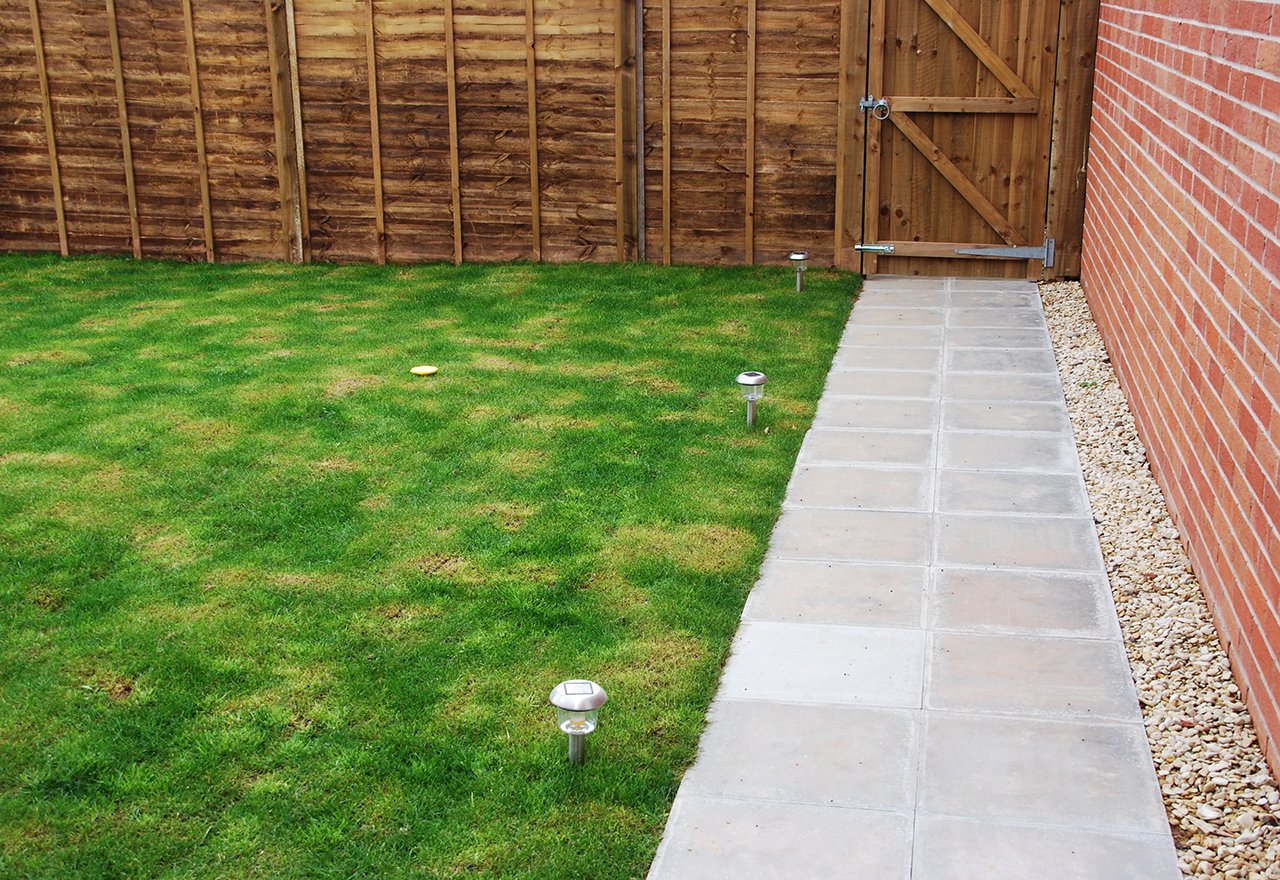
Is your lawn a variety of colors right now? Chances are it's because your lawn is made up of a patchwork of grasses. It's important to know as much as you can about the different types of grasses in your lawn and how they behave so that you know what to expect from them. If a patchy lawn bothers you, there are solutions available. Here are some grass types that you might be seeing right now in Ohio and throughout the Midwest.
Rough Bluegrass
Rough Bluegrass is a weedy grass type that thrives in wet, shady areas. It has stolons, which is a fancy name for an above ground root that allows it to climb over other grasses. That's why you'll see it start in a small patch and get gradually bigger. In the Spring, Rough Bluegrass stands out from traditional grasses like Kentucky Bluegrass and Turf Type Tall Fescue, because it is lighter in color, grows faster, and sticks up taller. The problem with Rough Bluegrass is that when the weather warms up, it goes dormant really early. Dormant Rough Bluegrass looks dead. I've seen a lot of people assume that their matted down patches of dormant Rough Bluegrass is an insect problem in their lawn. They go out and apply a potentially dangerous insecticide that doesn't solve their problem. Knowing the types of grass in your lawn really helps you narrow down the right solution to your problem and formulate a plan for improvement.
Below is what Rough Bluegrass looks like in the Spring in a Tall Fescue Lawn.
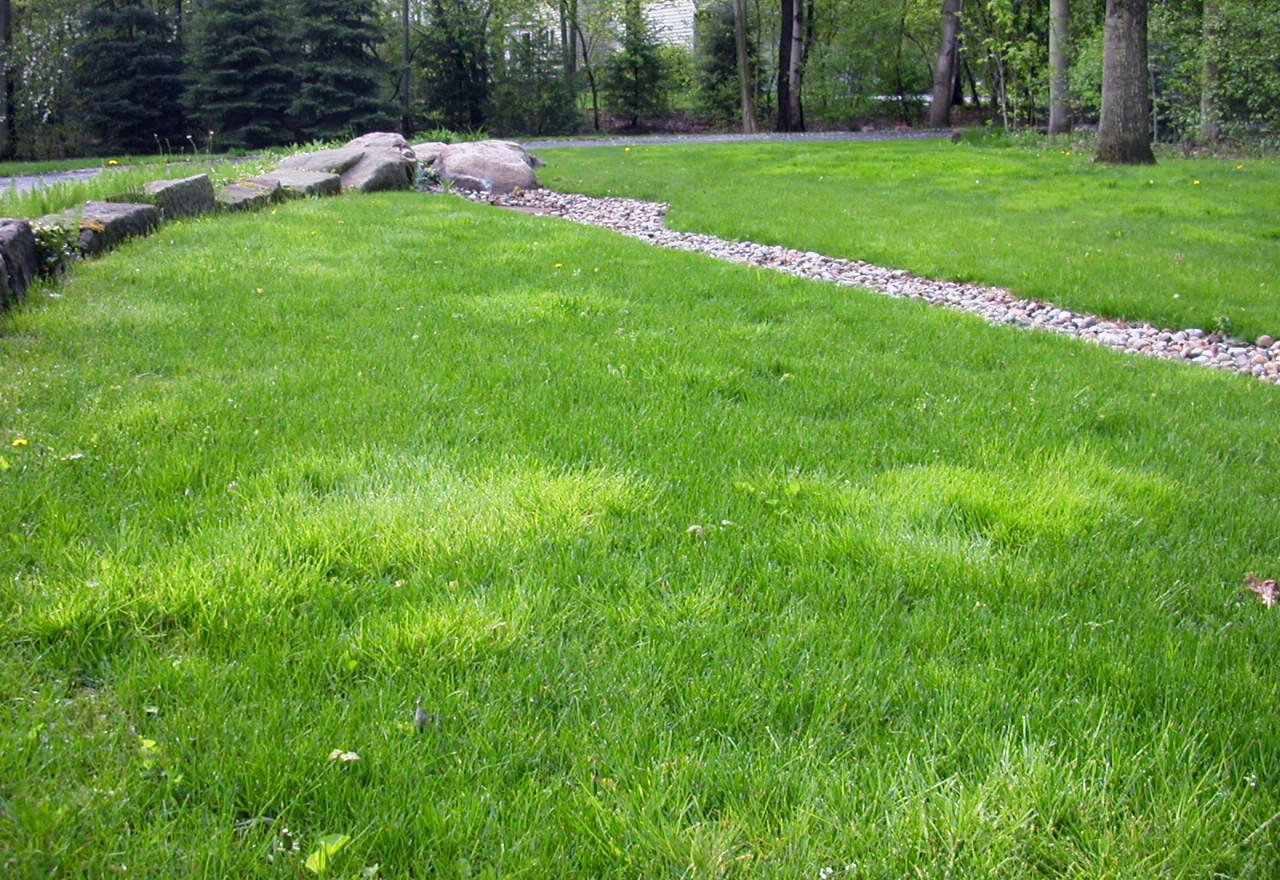
Here's what dormant Rough Bluegrass looks like next to Turf Type Tall Fescue in the middle of the Summer.
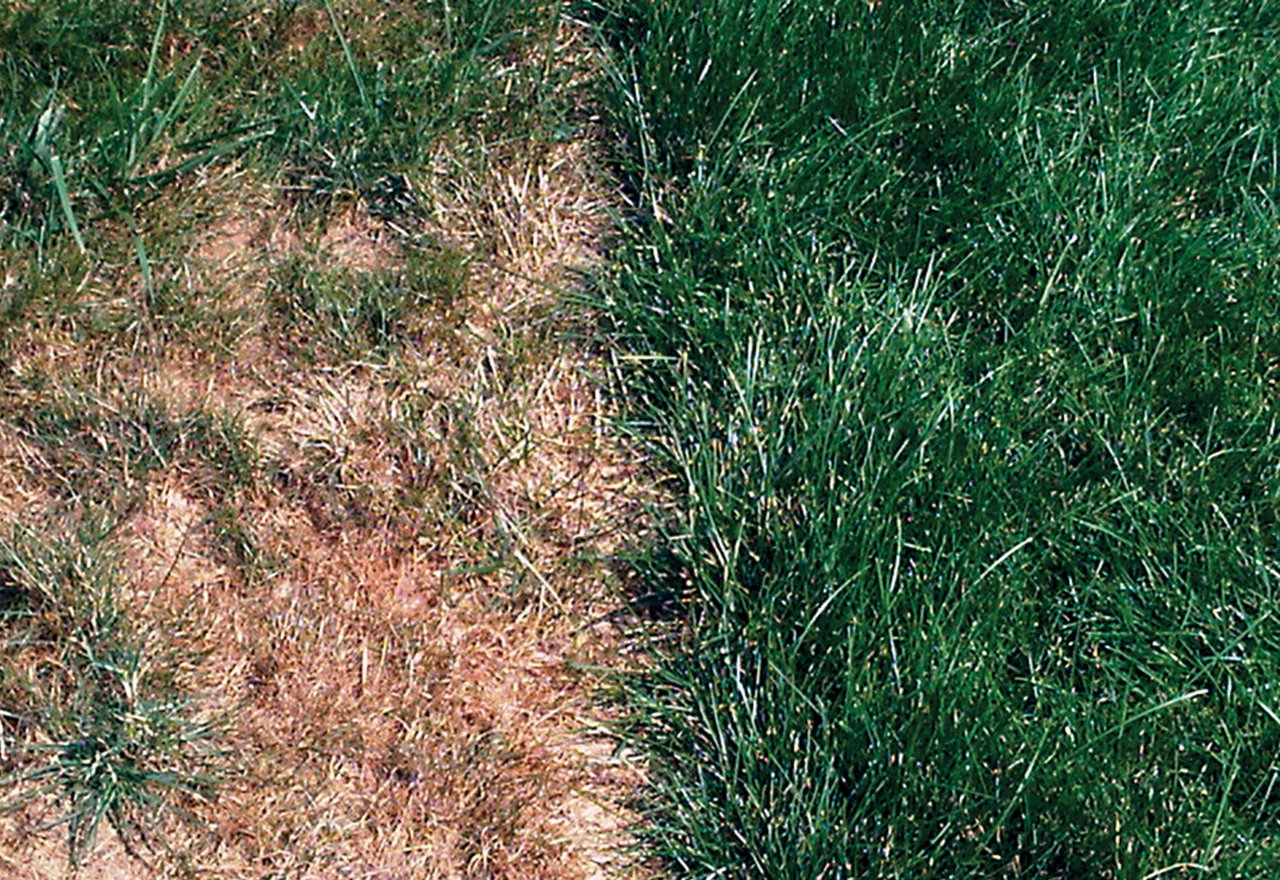
It would be pretty easy to assume that the Rough Bluegrass, pictured on the left, was dead right? If you have a patch of that in your lawn, you'd imagine that it was insects or disease or something. It turns out, that's just what Rough Bluegrass does in the Summer. It will recover on its own when temperatures cool in the Fall.
I would NEVER buy any grass seed that contains Rough Bluegrass unless your lawn is really wet and shady. Many Shade Seed mixes will contain Poa Trivialis (Rough Bluegrass) and I would avoid those. Rough Bluegrass can also end up mixed in with grass seed that you buy if you're purchasing Kentucky Bluegrass mixes. This is because Rough Bluegrass has a seed that is very similar in size and weight to Kentucky Bluegrass, which makes it difficult to sort out from Kentucky Bluegrass mixes. That's another reason we recommend a primarily Turf Type Tall Fescue seed mix, like our Good Nature Tuff Turf Lawn Seed. If your lawn is full of Rough Bluegrass, you can either learn to live with it turning brown every Summer, much earlier than other grasses, or you can decide to replace it. If you decide to replace it, you'll want to renovate your lawn. The best time for Lawn Renovation is late Summer, usually August or September.
Creeping Bentgrass
Creeping Bentgrass is similar to Rough Bluegrass (Poa Trivialis) in that it crawls over more desirable grasses in your lawn via above ground roots, called stolons. These stolons are the reason that when you try to rake your lawn, it pulls up like a bad comb-over job. Creeping Bentgrass is a finicky grass, that when grown under ideal conditions, can produce a beautiful lawn. It tolerates short mowing and is used extensively on golf course greens. The problem with Creeping Bentgrass is that it is susceptible to a variety of diseases and insects and generally struggles during the Summer. When Creeping Bentgrass turns brown and goes dormant during the warmer weather, it tends to be invaded by annual weeds.
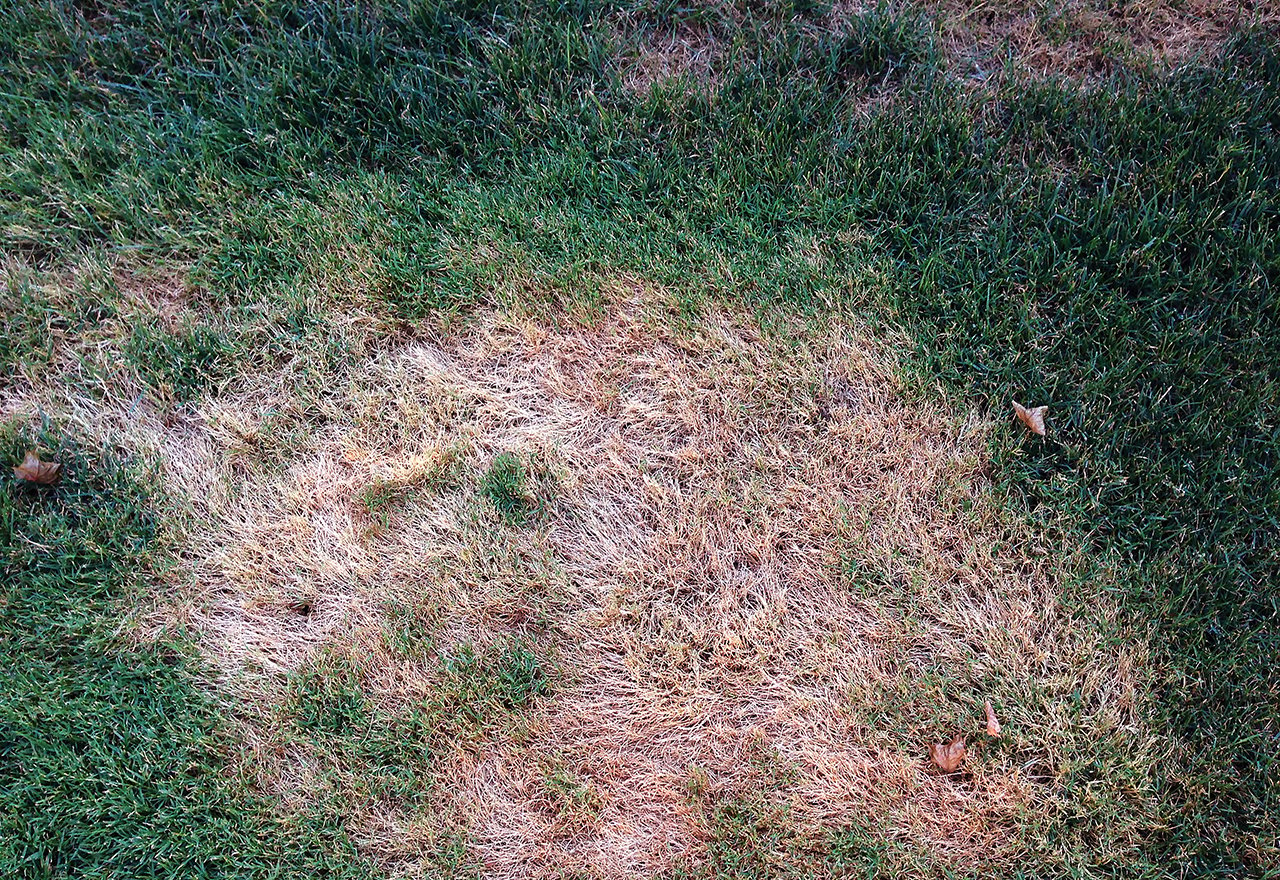
Coarse Tall Fescue
Always mistaken for Crabgrass, Coarse Tall Fescue is a perennial grass that has very coarse leaves. It sticks out like a sore thumb in a fine textured lawn, especially when all the fine textured grasses turn brown in the heat of Summer and the Tall Fescue stays nice and green. If you have a lot of this type of grass, we recommend Slice Seeding with Turf Type Tall Fescue, like our Good Nature Tuff Turf, which will stay greener during the Summer and camouflage the Coarse Tall Fescue. If you really want to eliminate it, there are a few chemicals that will do the trick, including Roundup.
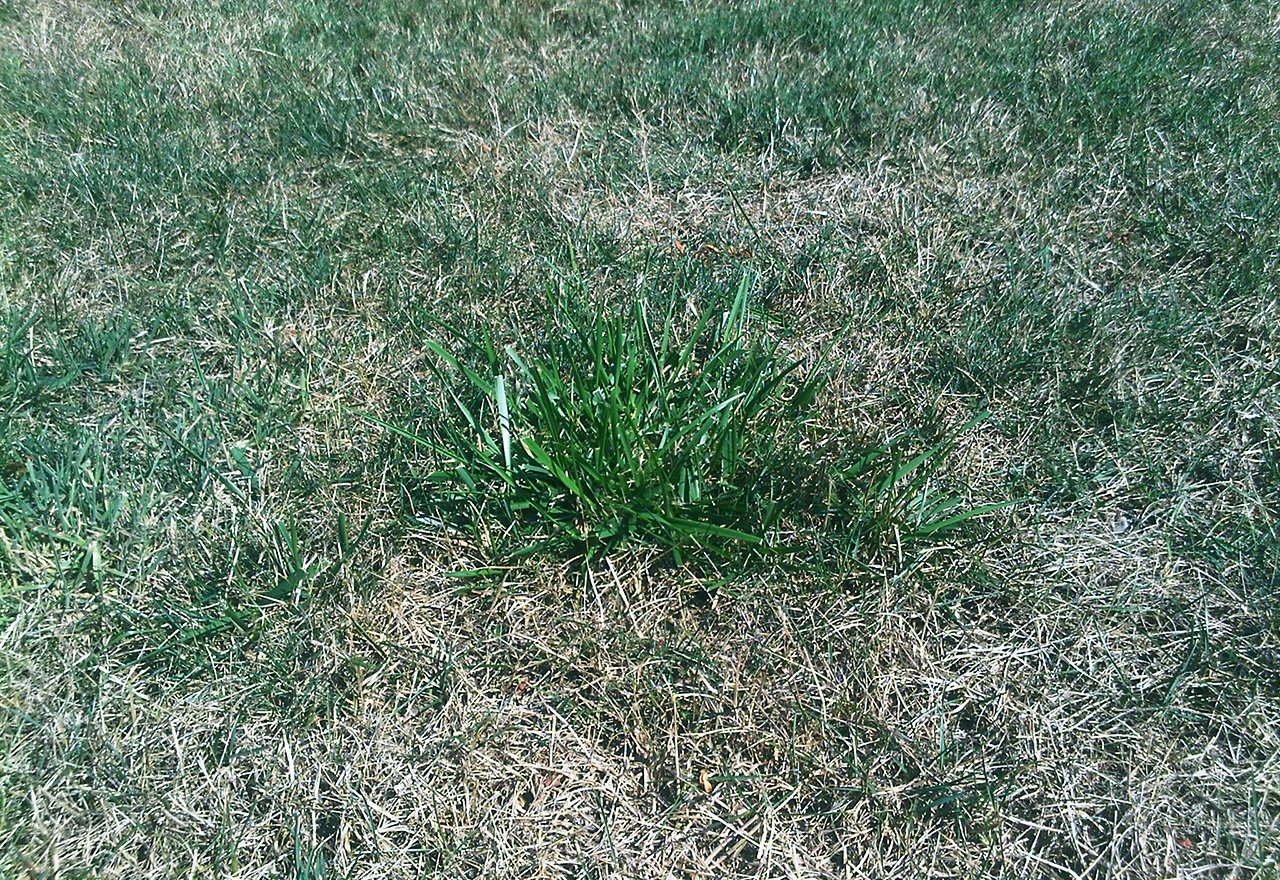
How to Handle Your Patchwork Lawn
If you can tolerate an imperfect lawn and don't mind the lack of uniformity, it often makes sense just to do the best you can and understand that your lawn will never be perfect with the grass varieties it has. In fact, if you have Rough Bluegrass or even Creeping Bentgrass, your lawn will often look terrible during the Summer. There is not much you can do other than replace your grasses with Lawn Renovation.













